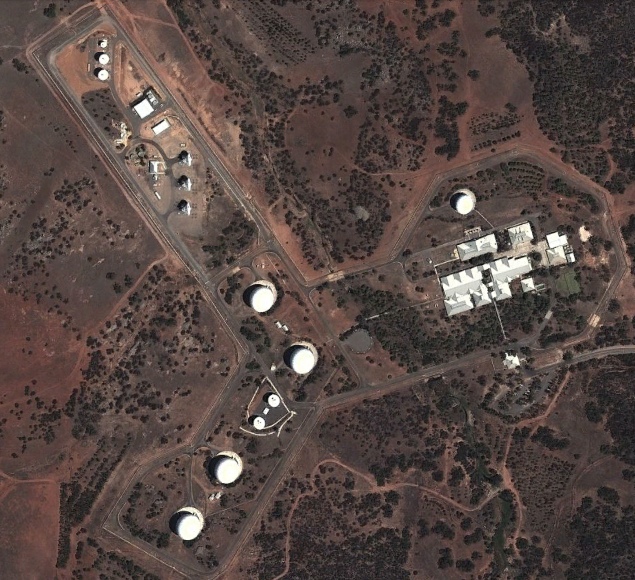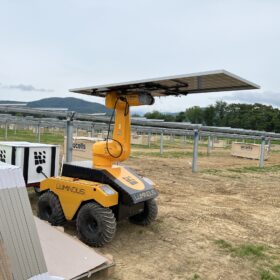Australia’s Department of Defence has officially unveiled a 1.2 MW solar array at its Satellite Communications Station (ADSCS) at Kojarena, in Western Australia. The PV project has been funded by Defence with a total of $4 million.
The Kojarena station is a major Australian signals interception facility, and is part of a worldwide system of satellite communications keyword monitoring known as Echelon. Under an agreement initiated in 2007, the Geraldton array is a part of the Wideband Global SATCOM system, which provides Australia access to the principally US-funded constellation of a number of high capacity global war-fighting communications satellites, according to the Nautilus Institute.
Minister for Defence Christopher Pyne said the site is a key component in the Australian Signals Directorate’s architecture defending Australia from global threats.
“It is exciting that we are now producing for the first time solar powered signals intelligence,” Pyne said. “The facility is the first large scale solar array developed by Defence, which has now increased its expertise in the procurement and installation of such facilities.”
The solar power facility was installed by local Australian contractors. The project was due to be completed in the 2017/18 financial year. Balance Services Group was the main contractor on the project.
“The new solar powered intelligence facility will free up electricity to meet the demands of approximately 400 households in the local community,” Minister for the Environment Melissa Price said, noting that the project is expected to save taxpayers up to $500,000 per year in electricity costs.
A tender for the 1.2 MW solar system was called in October 2017, with the goal to reduce the Department’s Satellite Communications Station’s reliance on the main grid, the South-West Interconnected System (SWIS). At the time it was said to mark the Australian military’s first foray into solar energy.
At the time, the Australian Department of Defence suggested other renewable projects were also planned. Last year, it announced plans to reduce reliance on diesel with the help of solar+storage as part of an upgrade of a base near Harts Range, north-east of Alice Springs, the Northern Territory. In a tender published in December, the department called for a hybrid system – a 1 MW solar PV array to be integrated with the existing diesel power station on site. The hybrid is to incorporate an energy storage system to help regulate power quality and other technical issues such as transient loads.
A microgrid projects on Garden Island delivered by troubled WA-based renewable energy developer Carnegie Clean Energy is supplying the nearby HMAS Stirling naval base under a power purchase agreement inked with Australia’s Department of Defence. The microgrid, featuring 2 MW solar PV and 2 MW/0.5 MWh battery, was commissioned last month before Carnegie’s ASX suspension and voluntary administration.
This content is protected by copyright and may not be reused. If you want to cooperate with us and would like to reuse some of our content, please contact: editors@pv-magazine.com.









By submitting this form you agree to pv magazine using your data for the purposes of publishing your comment.
Your personal data will only be disclosed or otherwise transmitted to third parties for the purposes of spam filtering or if this is necessary for technical maintenance of the website. Any other transfer to third parties will not take place unless this is justified on the basis of applicable data protection regulations or if pv magazine is legally obliged to do so.
You may revoke this consent at any time with effect for the future, in which case your personal data will be deleted immediately. Otherwise, your data will be deleted if pv magazine has processed your request or the purpose of data storage is fulfilled.
Further information on data privacy can be found in our Data Protection Policy.